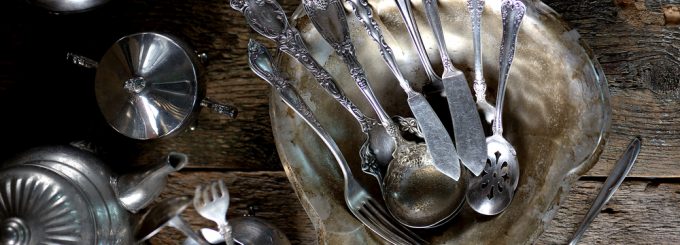Elegance in Silverware: Admiring Antique Cutlery and Utensils

Silverware, often referred to as flatware or tableware, represents an essential element of dining culture that has evolved over centuries. The term “silverware” encompasses an array of utensils and cutlery used in dining settings, with each piece reflecting not only functionality but also a sense of artistry and elegance. In this article, we delve into the world of antique silverware, exploring its history, craftsmanship, and enduring appeal. From delicate tea sets to intricately designed serving spoons, antique silverware continues to captivate collectors and enthusiasts, serving as a testament to the timeless beauty and craftsmanship of yesteryears.
Elegance in Design and Craftsmanship
Antique silverware stands as a testament to the exquisite craftsmanship that was meticulously poured into each piece. The intricate designs and attention to detail found in these vintage items are a testament to the artistry of silversmiths who dedicated their skills to create functional yet aesthetically pleasing pieces. Whether it’s the delicate scrollwork on a salad fork or the ornate handles of serving knives, antique silverware showcases a level of intricacy and artistry that is often unmatched by contemporary counterparts.
Reflecting Period Aesthetics
One of the most captivating aspects of antique silverware is its ability to reflect the aesthetics and design trends of the eras in which they were created. From the refined and ornate Rococo styles of the 18th century to the clean lines and geometric patterns of the Art Deco movement in the 20th century, these pieces are more than just utensils; they are time capsules that encapsulate the prevailing design sensibilities of their respective periods.
Functionality and Symbolism
Beyond their aesthetic appeal, antique silverware also serves as a fascinating window into the dining etiquette and societal norms of bygone eras. Different utensils were created for specific purposes, each carrying a distinct symbolism. Fish forks, oyster knives, and bonbon spoons are just a few examples of specialized silverware that once held significance in formal dining settings. Exploring the intended uses and cultural connotations of these pieces adds depth to the appreciation of antique silverware.
Preservation and Collection
Preserving and collecting antique silverware requires a delicate balance between admiration and maintenance. Silver has a tendency to tarnish over time, which is a natural process caused by exposure to air and other elements. Careful cleaning and storage are essential to maintain the beauty and value of these pieces. For collectors, sourcing authentic antique silverware involves research, authentication, and often a keen eye for detail to distinguish genuine pieces from reproductions or imitations.
Antique silverware stands as a testament to the timeless appeal of exquisite design, meticulous craftsmanship, and the rich history of dining culture. These pieces not only serve a functional purpose but also tell stories of eras long past, reflecting the artistic trends, societal norms, and intricate craftsmanship of their times. Collectors and enthusiasts continue to be drawn to the allure of antique silverware, valuing not only their aesthetic beauty but also the connections they provide to history and culture. Whether displayed as heirlooms, used on special occasions, or simply admired for their elegance, antique silverware remains a cherished treasure that bridges the gap between the past and the present.


